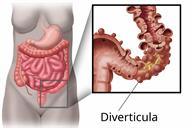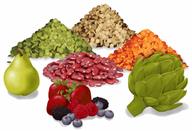ThisisPatientEngagementcontent
Diverticulitis
To download the Ukraine translated version, please click the link below

Diverticulitis happens when poop (stool) and bacteria get trapped in small pouches in the colon called diverticula. These pouches may form if you have a condition called diverticulosis. When the poop and bacteria get trapped, it can cause an infection and inflammation.
Diverticulitis may cause severe stomach pain and diarrhea. It can also lead to tissue damage in your colon. This can cause bleeding or blockage. In some cases, the diverticula may burst (rupture). This can cause infected poop to go into other parts of your abdomen.
This condition is caused by poop getting trapped in the diverticula. This allows bacteria to grow. It can lead to inflammation and infection.
You may need to have a colonoscopy. This is an exam to look at your whole large intestine. During the exam, a tube is put into the opening of your butt (anus) and then moved into your rectum, colon, and other parts of the large intestine.
This exam is done to look at the diverticula. It can also see if there is something else that may be causing your symptoms.
Medicines
Eating and drinking

General instructions
This information is not intended to replace advice given to you by your health care provider. Make sure you discuss any questions you have with your health care provider.
Cookies are used by this site. To decline or learn more, visit our cookie notice.
Copyright © 2025 Elsevier, its licensors, and contributors. All rights are reserved, including those for text and data mining, AI training, and similar technologies.